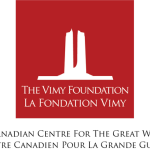
By: Thomas Adamson
When I was fifteen, I took a Canadian History class with a teacher who invested very little energy in designing engaging lesson plans. As a result, I think, of this teacher’s shortcomings, I remember very little about the class and I’ve retained very little of the subject material—a problem I’m now confronting as I train to become a high school history teacher. I remember most of the class being textbook-based, with significant portions of class time devoted to independently answering questions taken directly from the textbook’s pages, and I also remember several bizarre details about the teacher himself—how he always wore sunglasses inside and how he would erase a tally mark on the chalkboard for every day that brought him closer to his imminent retirement.
One lesson, however, sticks out in my memory. Near the end of the semester, as the tally marks on the board were nearing extinction and the class had virtually devolved into a series of tangentially relevant DVD screenings, we entered the class to find the teacher sitting on his desk and declaring that he’d be giving an “old fashioned lecture” on the NAFTA agreement that day. “Old fashioned lectures”, he proclaimed, are the kind of classroom learning we’d be expected to do when we went on to university. He then instructed us to “take out a pen and paper” and try to keep up with his lecture, reminding us that we couldn’t expect university lecturers to “slow down” their material for students with slow handwriting.
The effect of this sudden pedagogical change was, to me, striking. Most classes that term had been unstructured and permissive, with very low expectations for class involvement and engagement.
Myself and my fellow students had thus come to the conclusion that the class was a “waste of time” with a teacher had shown little effort to scaffold textbook material with meaningful lessons. With the announcement of the “lecture”, the class’s attention was suddenly transfixed in bewildered expectation—what was about to happen here? As a result, I think, of the vague sense that a formal lecture meant “serious business”, the class spent the entire forty-five minute lecture in relatively rapt attention, with even the most disengaged students actively taking notes.
I’ll never know exactly why my teacher chose to “lecture” that day, but at the time I vaguely assumed it was an attempt to “keep us on our toes” or “shake things up”. Like a basketball coach suddenly deploying a zone defense to catch the other team off-guard, he had disrupted something stagnant and ineffective by testing out a radically different but old-fashioned technique. This assumption accorded well with the teacher’s well-established reputation for unorthodox behaviour. I also remember feeling like the decision to lecture must be connected to his passion for the subject at hand, as though NAFTA was somehow his area of expertise or he had a deep personal connection to the issue. For me, this raised the overall urgency of the lecture, made me pay closer attention, and got me thinking about the ways big historical shifts are enacted on the daily lives of people like myself or my teacher. I distinctly remember how the teacher referenced his own youth in an Ontario manufacturing town that was later devastated by the fallout of free trade, and I mentally compared this to the experiences of my parents, who grew up in similar situations. A final feeling that lingers from that day is the sense of community that came from the act of collectively listening as a class. As most of the lessons had been constructed around individual assignments and textbook readings, the collective focus on the teacher left me with an indefinable sense of solidarity
with the classmates surrounding me, and this somehow imbued the learning process with a comforting solemnity.
Looking back, I suspect that lecture was one of the first moments I ever recognized pedagogy as pedagogy—as something more than “good or bad teachers” or “fun or boring classes”. I think younger students tend to view education as a system of content delivery, in which material is transferred through a static system of books and classes while the mechanics of teaching remain invisible. Watching my teacher disrupt expectations and draw attention to his own pedagogical choices suddenly foregrounded the whole system of skills, decisions, and performances that had been surrounding me in school for years. I was thus struck with a heightened reflexive awareness of my own position in this pedagogical system and the student-teacher dialectic at the heart of it. The realization that my teacher was trying to teach and not just “running through the motions” made me self-conscious about my role in the class and drew me subconsciously to the prospect of trying to learn.
I think there are a number of morals that could be drawn from this story, which is probably why it has kept coming back to me in a variety of teaching situations throughout teachers college. One obvious lesson is that students recognize effort, enthusiasm, and engagement from their teachers, and that these qualities can be transferred in a classroom setting. However, I want to focus specifically on a much-maligned pedagogical practice that lies at the heart of this story: the lecture. Progressive educators have long dismissed the lecture as a pedagogical tool that enacts an authoritative, top-down, unilateral approach to learning. Lecturing, it has been argued, should be replaced by teaching that facilitates more participatory, multimodal, experiential, and dialogical types of
learning. As Miya Tokumitsu writes in a recent article for Jacobin, this antipathy toward lecturing has even gained a foothold in universities: “Administrators and instructors alike have declared lecturing a stale teaching method and begun advocating new so-called content delivery techniques, from lab- and project-based learning to flipped classrooms and online instruction, that “disrupt” the sage-on-the-stage model” (“Defense”, 2017). The rational for this “disruption” is often that lecturing—in both schools and universities—inadequately prepares students to participate a modern economy increasingly characterized by creativity, lateral collaboration, and new digital media.
One problem with this characterization is that it overstates the “lateral” and “creative” character of most modern industries, many of which have deployed these signifiers to mask increased precarity and exploitation. Perhaps more importantly, even if new pedagogies are effective at training students to succeed in a hypothetical decentralized and creative workplace, educators need to ask if all learning should be driven by the demands and logic of the market. This is, in fact, the same line of questioning that drove many progressive educators to reject lecturing in the first place. For instance, while Paulo Freire’s seminal Pedagogy of the Oppressed stops short of singling out the lecture as the pedagogical medium for training factory labourers, this is implied by his notion that unidirectional education denies the subjectivity of the oppressed in an “effort to turn women and men into automatons” (p. 74). Yet today progressive educators and reformers have been quick to defend inquiry-based learning, decentralized classrooms, and multiliteracy pedagogy in terms of their market value. Cope and Kalantzis, whose work with the New London Group introduced educators around the world to the concept of “multiliteracies”, admit that much of their work’s value lies in its capacity to “work
pragmatically” for “today’s capitalism” (p. 170).
The purpose of this reflection is not to cast aspersions on the pedagogical value of inquiry-based learning and modern teaching technologies. Its purpose is to question whether the unbridled enthusiasm for these methods (which is undoubtedly fuelled by capitalist interests even if these methods do contain emancipatory potential) has overlooked the pedagogical and social value of an older pedagogical form—namely, the lecture. What can the lecture offer twenty-first century learners? Tokumitsu makes the point that the contrast between “active learning pedagogy” and the lecture attendee’s supposed “passivity” is somewhat of a false dichotomy: “But lecture attendees do lots of things: they take notes, they react, they scan the room for reactions, and most importantly, they listen. Listening to a sustained, hour-long argument requires initiative, will, and focus. In other words, it is an activity. But today, the act of listening counts for very little, as it does not appear to produce any outcomes or have an evident goal.” (“Defense”, 2017) In universities as in secondary schools, the kinds of sequential, agile, reflective, and abstract thinking demanded of the lecture attendee are brushed off as out of step with the new goals of education: the formation of marketable skills and the development of human capital. Without even questioning these fundamental goals, one hardly needs to cite examples to establish the value of this kind of thinking and reasoning in “the real world”. The profession of law is an obvious instance where all of these skills apply, not to mention the skills of deep listening and focused attention that lectures always demand. In a world where educators are constantly wringing their hands over a supposed decline in student attention spans, the abandonment of the lecture, which forces students to practice and develop skills of attention, seems like a misguided development.
When my history teacher chose to lecture that day many years ago, he wasn’t thoughtlessly adhering to the top-down, authoritarian structure of his traditional classroom, nor was he trying to enforce student passivity—he was trying to disrupt a stale and unstructured routine with something that demanded active attention, engaged listening, and agile reasoning skills. For me, and for many of my classmates that day, the result was the most engaging lesson of the entire course. Rather than dismissing the lecture as an outdated and ineffective pedagogical relic, educators would do well to consider it as one of a host of different techniques to be deployed in the classroom. While lectures demand different skills than active learning pedagogy, these skills are fully compatible with any educational philosophy and view of human development—whether one chooses to focus myopically on “marketable skills” or one chooses to see the obvious value of abstract reasoning and collective listening in all aspects of life. By returning the lecture to its rightful place in the pedagogical arsenal, educators can work at regaining the skills required to deploy an effective lecture, the loss of which has undoubtedly contributed to the lecture’s loss of prestige in university and secondary school classrooms today.
Works Cited
Cope, B., & Kalantzis, M. (2009). “Multiliteracies”: New Literacies, New Learning. Pedagogies: An International Journal, 4(3). doi:10.1080/15544800903076044
Freire, P. (1970). Pedagogy of the Oppressed. New York: Herder & Herder.
Tokumitsu, M. (February, 2017). In Defense of the Lecture. Jacobin. Retrieved from https://www.jacobinmag.com/2017/02/lectures-learning-school-academia-universities- pedagogy/
Thomas is currently a student in Teaching English in the I/S Division course in the York U Faculty of Education, taught by Peter Flaherty.

